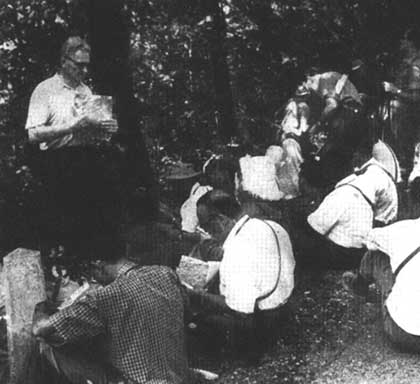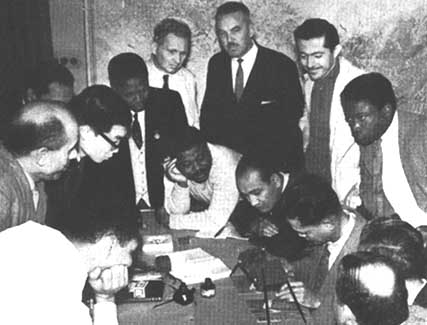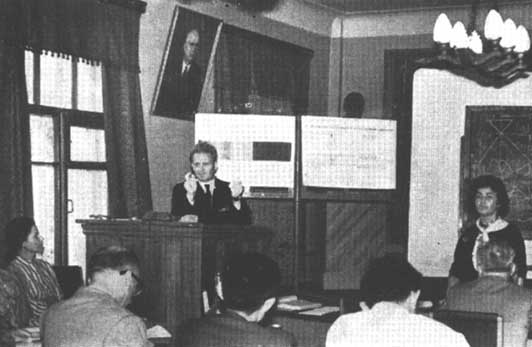THE U.S.S.R., through its technical assistance program, co-operated with FAO in 1963 in organizing a training center on the planning and execution of forest inventories over extensive forest areas, by means of aerial photography and other similar techniques. The course, which lasted two months, was organized at the Forest Research Institute of Leningrad and at Sochi on the Black Sea coast. Twenty foresters from an equal number of developing countries participated.
The syllabus included a series of lectures delivered by Dr. S.V. Belov of the Leningrad Forest Research Institute, supplemented by laboratory sessions followed by practical work in photointerpretation and inventorying in the forests of the Leningrad area and in the northern Caucasus.



Of great interest to foresters as a breakthrough to species identification is the development in the U.S.S.R. of what are called "spectrozonal" films. These films combine one panchromatic and one infrachromatic layer on a common basis. During the developing process color ingredients are introduced in both of these layers and tincture the image in various colors.
Many objects, in particular tree species, do not appear in their natural colors, but in distinctly different unconventional ones. For instance, broadleaf tree species in yellow and orange, bare soil in blue, coniferous tree species in green of various tones. This is a great advantage because photointerpretation is considerably facilitated. Positives can be produced either on two-layer spectrozonal, three-layer color, or normal black and white photographic paper
The aerial photographs shown on the following pages are of a single forest area taken in summer.
FIGURE 1. - Panchromatic film with yellow light filter.
FIGURE 2. - Spectrozonal film with orange filter.
FIGURE 3. - Infrachromatic film with red filter.